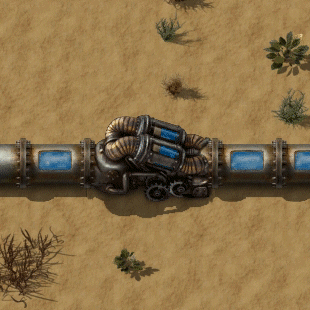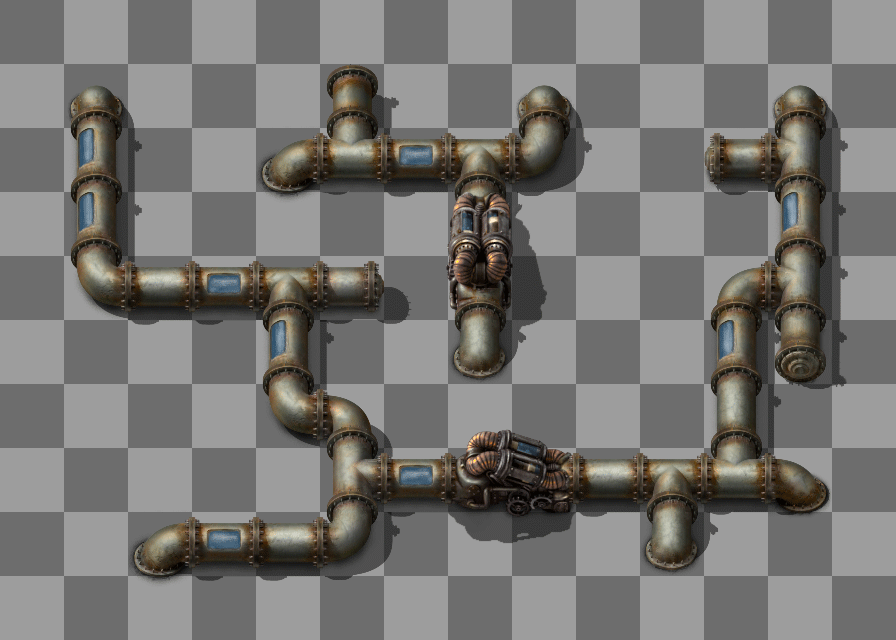Pump
| Pump |
|
Recipe |
|||||||||||||
| +++ → | |||||||||||||
|
Total raw |
|||||||||||||
| +++ | |||||||||||||
|
Map color |
|||||||||||||
|
Fluid storage volume |
400 |
||||||||||||
|
Health |
|
||||||||||||
|
Resistances |
Fire: 0/80% |
||||||||||||
|
Stack size |
50 |
||||||||||||
|
50 (1 stack) |
|||||||||||||
|
Dimensions |
1×2 |
||||||||||||
|
Energy consumption |
30 kW (electric) |
||||||||||||
|
Pumping speed |
|
||||||||||||
|
Mining time |
0.2 |
||||||||||||
|
Prototype type |
|||||||||||||
|
Internal name |
pump |
||||||||||||
|
Required technologies |
|||||||||||||
|
Produced by |
|||||||||||||
This article is about the pump, formerly known as the small pump. For the water extraction device, see offshore pump. For the oil extraction device, see pumpjack.
Overview
A Pump is a multipurpose fluid handling device which can be used to move fluids, perform flow control, prevent back-flow and load/unload trains. The pump can be seen as the inserter for fluids.
When connected to pipes on both ends of the pump and powered, the pump will transfer fluid from the source side to the output side if it will fit. This will occur even if the input side has significantly lower fluid levels.
Note that the pump can't mix different kinds of fluids. Furthermore, unlike normal pipes, pumps can only connect to pipes only on the front and back of the pump instead of connecting to pipes from all sides. This can be useful for having tightly packed lines of pipes being parallel to each other, without the risk of fluids mixing.

Throughput
Pumps can move 200 units of fluid per tick, or 12000 per second. This is further limited by the input fluid container: the pump can never move more fluid than is available and it is therefore generally beneficial to have a pressurized storage tank directly at its input. More information on pump and pipe throughput can be found on the forums.
Note that the pump is slower than 12000 fluid/s, that are shown in the tooltip and listed above, due to a bug.
Loading/unloading fluid wagons
Pumps can load and unload fluid wagons at train stops. When a pump is placed with one end facing a rail track and the other end connected to a pipe, it will visually change. When a fluid wagon is stopped adjacent, the pump head will connect to the top of the nearest tank and begin transferring fluids. It will not connect if a circuit condition is preventing it, or it is unpowered.
Use as a valve
The pump works as a controllable valve:
- When powered, the pump will let fluids through, but only in its set direction.
- If unpowered, the pump doesn't let anything through.
- If the pump is powered but has a circuit condition, it will only let fluids through when the condition is met.
This can be used to control some parts of a player's factory. For example, with a single wire from a lubricant tank to a pump pumping heavy oil, you can disable cracking heavy oil → light oil when lubricant is needed.
Animations and visuals
History
- 0.15.0:
- Graphics changed, now has a nice animation
- Size changed to 2×1 tiles
- Recipe changed, now requires engine units rather than electric engine units.
- Throughput massively increased.
- Renamed from Small Pump to Pump
- 0.12.1:
- Copy pasting settings now works for small pumps.
- 0.12.0:
- Now connectible to the circuit network.
- 0.10.0:
- Changed collision box logic
- 0.9.0:
- Introduced

